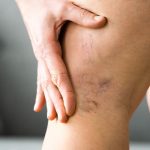How Tretinoin Fights Signs of Aging
Advances in the beauty industry have given everyone access to over-the-counter anti-aging products, but tretinoin is the only product backed by science to treat fine lines, dark spots and damage from sun exposure. Retinol creams can be found in most drugstores and beauty retailers, but they are not as potent as prescription tretinoin, and they do not offer the same results.
What is tretinoin?
Tretinoin is a medication that was initially used as an acne treatment, but it has been proven effective in combating the signs of aging. Its active ingredient is a form of Vitamin A within a group of medications called retinoids. Tretinoin is 20 times more potent than the retinol you can find in drugstore products, so it is only available with a prescription. It comes in different strengths ranging from 0.01% to 0.04% in the form of a topical lotion, cream or gel. It is also known by the brand names Retin-A or Kinerase.
What are the benefits?
Prescription tretinoin works to boost cell renewal and turnover and replaces older skin with newer skin. It helps minimize skin surface issues like fine lines, discoloration, age spots and rough patches. Unlike over-the-counter anti-aging products, tretinoin has anti-aging ingredients that go deep beneath the outer portion of the skin to the epidermis. It boosts the production of new collagen in around six months, resulting in smoother, younger-looking skin.
Tretinoin also has an exfoliating effect that can help improve the skin’s texture and tone. It was initially developed to treat acne and helps unclogs the pores and prevent further blemishes. If you have issues with adult acne, it can help for both breakouts and signs of aging.
How can I start using tretinoin?
Schedule a consultation to see if tretinoin is right for you. Your dermatologist will likely recommend it along with a full skincare routine to minimize side effects and further protect your skin.
Once you have a prescription, it is easy to use. Apply a small amount of the cream or gel to your skin each night after washing your face. Avoid using harsh cleansers to avoid irritation. Make sure your face is completely dry before applying it.
You do not have to start using it every day. Instead, let your skin adjust to it just like you would with any other product. Start by applying it to your skin two times a week. Once your skin acclimates, then slowly start using it more often. Apply only a small amount of the product at a time. All it takes is a pea-sized amount to get the job done. Avoid your eyes, nose and lips. After the cream has absorbed into your skin, you can apply a moisturizer to prevent dryness.
Do not use tretinoin with other retinol products, topical acne medications or serums with salicylic acid.
Tretinoin can make your skin more sensitive to sunlight, so wear sunscreen daily, even on cloudy days. Remember, you are using this product to fight signs of aging because of sun exposure, so sunscreen should always be a part of your routine to keep your skin healthy.
Consistency is key in using tretinoin. You may not see results right away, but it is working. People tend to see changes after six to eight weeks of continued use. Tretinoin is a long-term solution to combat signs of aging. Your dermatologist will be able to create a plan that works for you.
With any prescription medication, keep tretinoin out of the reach of children, do not use it after its expiration date and store it at room temperature and away from direct light or heat.
When is tretinoin not an option?
Talk to your doctor about your skin issues and lifestyle. A few reasons you may not be a candidate for tretinoin include:
- You are pregnant, trying to get pregnant or breastfeeding
- You have a job or hobby that requires you to be in the sun for long periods
- You take medications that may interact with tretinoin
- You have food or drug allergies
- You currently have sunburn, eczema or another skin condition
What are the side effects?
The most significant side effect of tretinoin is dry skin and mild irritation, especially for those with sensitive skin. This is normal and will disappear once your skin acclimates to the product. Other common side effects include moderate redness, itchiness or peeling. After a few weeks, your symptoms will fade. If you experience pain, rashes, swelling, blistering or changes in skin pigmentation, contact your dermatologist right away.
Cosmetic dermatology in Columbia, Lexington, Irmo and Camden
Columbia Skin Clinic is the Midlands’ largest and most respected dermatology practice. If you would like more advice about cosmetic issues or to get a tretinoin prescription, schedule a consultation with one of our dermatologists today.






